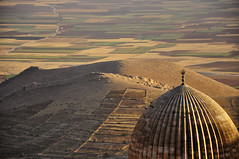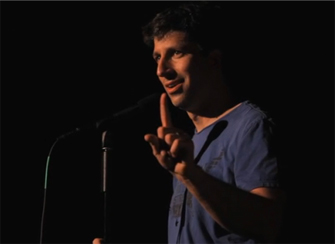Can Square and iZettle Revolutionize Busking and Micro-Philanthropy?
You’ve heard of Square. Buy on the fly. Accept credit cards through your mobile device. Cool, right? Listening to a Salvation Army bell ringer the other day I imagined a chilly Santa passing his iPhone around to pedestrians to swipe their cards instead of tossing change into the dangling cauldron. Off thought. But not out of the question.
In fact, universalizing (and lowering the bar for) credit card transactions could revolutionize micro-commerce. Remember that “clever web-based platform for social action, fundraising, group action” called The Point? A whole new boom in micro-philanthropy could emerge virtually over night.
While Square has been the darling of the venture capital world lately, its honeymoon may be coming to an end…
Enter iZettle, a smart new way that anybody can transact commerce on the fly.
Take card payments. With your iPhone or iPad!
Now anyone can take card payments. You and your friends. Your business. All you need is an iPhone or iPad and iZettle. (iZettle website)
Hold your horses, fellow Americans, the Swedes have pole position this time. We’ll have to wait until it deploys in the US. Or move to Sweden!
Why might this nifty gadget and service give Square a run for their money?
iZettle… is Europe’s answer to card payments app Square, only it is a better solution. While Square uses the magnetic strip on your credit or debit card, iZettle securely handles the card’s chip… this could be one of those technologies whose time is about to come. (WSJ)
Having lived in Europe (1999-2003) I’m quite familiar with these smart chips. I’m not a finance tech wonk, but I suspect there’s an added security element when the chip is integrated. Maybe not. Whatever the case, much of western Europe used these cards, so even a non-US, European roll-out of the iZettle could make some waves. And it seems already to be receiving a warm welcome.
iZettle offers huge advantages over other systems that let businesses accept chip-card payments. (Forbes)
iZettle — the New, Better Square — Coming Soon to America? (Huffington Post)
I’m not one to prognosticate in the world of finance, but I can’t resist good storytelling. And this little video is good storytelling. The story arc is compelling, and the mashup of realistic video with cartooning is intriguing. It transforms a boring topic (credit card readers, financial transactions) and into something hip and fun.
Doodling plays on our earliest memories of drawing fantasies into realities. A scribble on a page was actually a friendly dragon just waiting to carry us across the river to a fantasy land filled with chocolate and trampolines. And if they can de-business-ize (It’s my blog; I can make up words if I want to! Consider it blogger’s license.) credit card transactions, make them easy, accessible and romantic, well then they deserve to give Square a run for their money. And hopefully along the way, some good will trickle down to the rest of us. I’ve mentioned micro-philanthropy (imagine a church service in which an iPhone with a card reader is in the collection bowl with the cash and envelopes), but the image that really tickles me is a busker entertaining an audience on a street corner and then tip via credit card using the busker’s mobile phone. That’s the day I slip away to wander the globe as an itinerant storyteller!
Related articles
- What’s the Point? (virtualdavis.com)
- Europe’s Square iZettle Raises $11 Million For Mobile Payments Technology (techcrunch.com)
- iZettle credit card reader for iPhone now available in Sweden in limited numbers (tuaw.com)
- iZettle Lets Europe’s Mom-and-Pops Take Chip-Cards (forbes.com)
- Europe’s Square rival iZettle officially launches its iOS card payments service (thenextweb.com)
- iZettle, Europe’s answer to Square, is out of beta (gigaom.com)
- iZettle now officially open for business in Sweden (intomobile.com)













